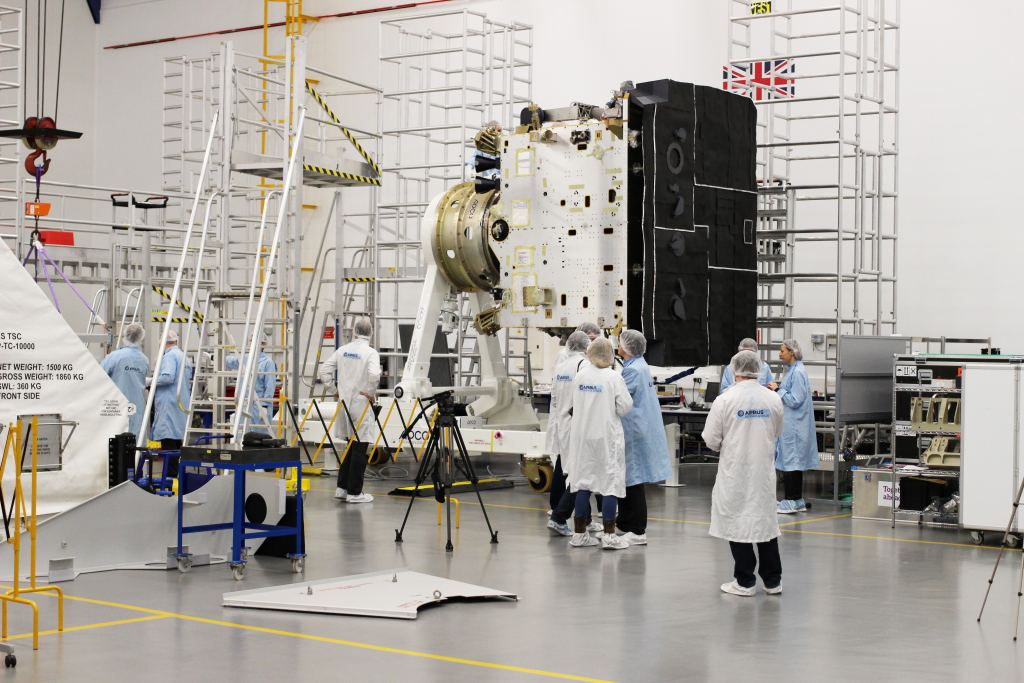Our native star the Solar has been the supply of many research from floor primarily based telescopes to area primarily based observatories. The ESA Photo voltaic Orbiter has been approaching the Solar, capturing pictures alongside the way in which in unprecedented element. It arrived at its midway level in March final yr and captured a collection of 25 pictures. They’ve now been stitched collectively to disclose an astonishingly excessive decision picture. You may even zoom in to see particular person granules within the photo voltaic photosphere.
Compared to Earth, the Solar is very large however in on the subject of different stars, it’s fairly common. It gives vitality to maintain life by means of the method of nuclear fusion deep in its core. The hydrogen atoms are fused into helium producing a lot vitality that warmth and lightweight bathes our planet. Like all different stars, the Solar is a superb large ball of electrically charged gasoline with a visual floor temperature of about 5,500°C. It measures a staggering 1.39 million km throughout and lies at a mean distance of 150 million km from us. It accounts for 99% of the mass of the Photo voltaic System and it’s this which is accountable for its immense gravitational pull which has stored planets, asteroids and comets in orbit for the final 4.6 billion years!
Certainly it’s the most outstanding astronomical object to grace our skies and so it’s no shock it has been the goal of many, many research. ESA’s Photo voltaic Orbiter is a type of area primarily based observatories that has began to unveil a number of the mysteries of our nearest star. It was launched in February 2020 and was designed to seize pictures of the Solar’s poles together with measuring its magnetic fields and the photo voltaic wind. The orbit adopted by Photo voltaic Orbiter may be very particular following an elliptical orbit that takes it to inside 42 million km of the Solar.

On board Photo voltaic Orbiter are devices to probe the dynamics of the Solar. Probably the most thrilling of those are these designed to watch the Solar immediately and consists of the Excessive Ultraviolet Imager (EUI) and the Polarimetric and Helioseismic Imager (PHI) which when mixed can with different on board devices can create some fabulously excessive decision pictures. With Photo voltaic Orbiter already half option to the Solar ESA have launched a shocking new picture of our nearest star derived from information from each EUI and PHI.
On the time the pictures have been taken, Photo voltaic Orbiter was 74 million km away from the Solar (Mercury is roughly 50 million km away) and was too shut to have the ability to seize one picture of the entire Solar. As an alternative, 25 pictures have been taken over just a few hours after which stitched collectively to create the mosaic that has simply been launched. The completed outcome will be seen right here and has a decision of round 175 km per pixel. Earlier observations have gone deeper for instance the Gregor Photo voltaic Telescope on Tenerife has achieved a decision of simply 50 km per pixel however this was solely ever of a small part of the Solar.
Giant mosaics have been by no means attainable as a result of turbulence within the environment making it inconceivable to sew adequate pictures collectively. The picture is beautiful. When you zoom in you may see the sample of granulation all around the Solar’s photosphere and even just a few sunspots in tremendous excessive decision.
Supply : The Photo voltaic Hearth Up Shut





